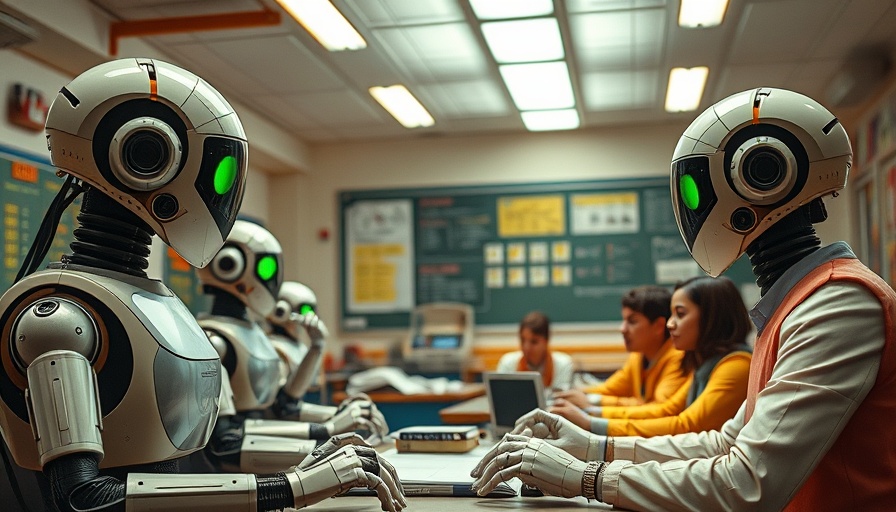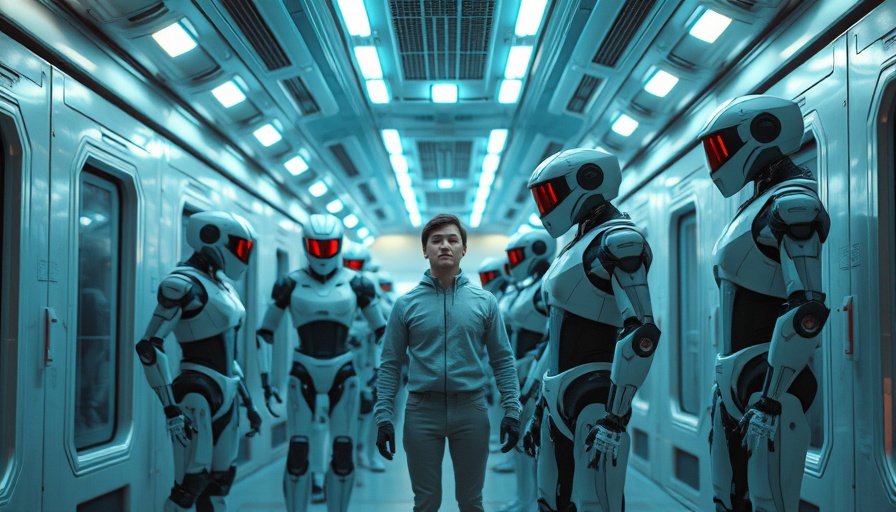
The Future of Game Development: AI at the Helm
The realm of gaming has undergone a seismic shift with the emergence of artificial intelligence, enabling unprecedented advancements in game development. The latest innovation discussed in the video New Game AI Turns Photos Into Playable Worlds! demonstrates just how far we've come. By turning static images into immersive game worlds, AI is bridging the gap between reality and the virtual landscape. It's not just a futuristic dream; it's happening now, ready to transform how we engage with games and how businesses can leverage this technology.
In the video New Game AI Turns Photos Into Playable Worlds!, the discussion dives into the revolutionary capabilities of AI technology in game development, sparking a deeper analysis of its implications for the business sector.
How AI is Revolutionizing Gaming
The notion of an AI that can create a playable game world from photos resembles trying to boil an egg, but instead discovering a fusion reactor. This analogy aptly depicts the unexpected yet groundbreaking nature of new game-making AIs. Previous attempts primarily focused on creating 2D platformers, but new innovations have paved the way for more complex structures. GameCraft, a recent breakthrough from Tencent, uses a million gameplay recordings to generate coherent 3D environments, showcasing rapid progress in just a few months.
Understanding GameCraft’s Technical Advances
What makes GameCraft remarkable is its ability to manage multiple factors in real-time, including traffic dynamics, character movements, and a third-person perspective—tasks previously out of reach for standard AI. This system not only generates animation but also brings life to static memories, allowing users to revisit past experiences in a new and exciting format. What was once crafted as a simple animation now feels like a bustling world, a fresh step toward interactive storytelling.
The Business Impact: New Opportunities for Entrepreneurs
For business owners, this technological leap represents not just novelty but a potential shift in how brand experiences can be delivered. Imagine offering customers the ability to explore products in a richly interactive setting, or even creating virtual spaces that customers can engage with at their leisure. As AI continues to enhance these possibilities, businesses need to adapt swiftly, harnessing advancements to stay competitive and ahead of market demands.
AI’s Limitations: The Path Forward
While the advancements are exciting, it’s essential to recognize current limitations. The AI models still require traditional interactive elements to truly create a gaming experience. This barrier highlights the work that remains to be done, providing an opportunity for innovators to explore what’s next. As AI technology continues to advance, merely having the ability to create scenic worlds won’t suffice; a true gaming experience hinges on character interactions and dynamic environments.
Looking Ahead: The Future of Gaming and AI
As the video celebrates a decade of AI exploration through platforms like Two Minute Papers, it underlines the trajectory of innovation. The rapid advancement signifies not only promising developments for gamers but huge opportunities for entrepreneurs keen on integrating these technologies into their business models. By embracing AI-driven tools, businesses can enhance their marketing strategies, create immersive customer experiences, and ultimately drive engagement and sales.
So, as we stand at the cusp of this exciting era in technology, it is critical for savvy business owners to consider how they can incorporate AI into their operations. The fusion of creativity with artificial intelligence is reshaping industries, and those who adapt will thrive. GET AI WORKING FOR YOU TODAY.
 Add Row
Add Row  Add
Add 




Write A Comment